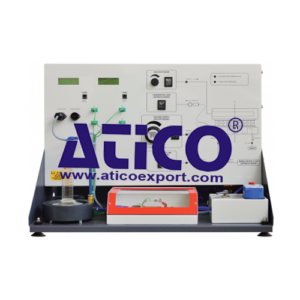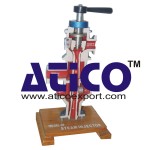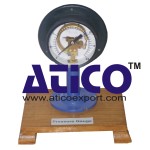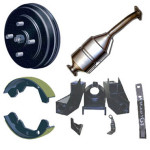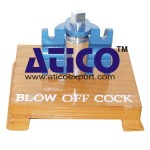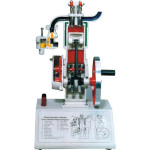Description
The increasing need for smaller and more portable electrically powered equipment has produced a need for low maintenance, smaller and more portable cooling. To satisfy this need, manufacturers now use solidstate thermoelectric devices in computers, portable refrigerators and cool boxes. The Peltier and Seebeck Eff ect Apparatus shows how one of these devices work and tests its performance when connected in a choice of two modes: • Heat to electricity for power generation when used in Seebeck mode – often used for thermoelectric generation and given the acronym ‘TEG’. • As an electrically powered heat pump when used in Peltier mode. Often used in thermoelectric cooling and given the acronym ‘TEC’. Students then learn to analyse its performance in both modes, analysing several factors including coeffi cient of performance (COP) and energy balance. For the Seebeck tests, the equipment uses an external cold water source and variable power electric heater to create a temperature diff erence across the device. The device then converts this into an electrical potential diff erence (voltage). A switch allows tests with and without an electrical load. The load allows generated power to fl ow and be measured for a range of applied temperature gradients. For the Peltier tests it also uses the electric heater, but with a small water storage tank and water pump, creating a stable, fi xed-fl ow water supply. A variable voltage supply controls the electrical power into the device. A calibrated vessel allows students to measure the fi xed water fl ow accurately, for calculation of the heat pumped at the ‘cold’ side of the device. This allows assessment of the device performance over a range of temperature gradients and electrical power inputs. A hand-operated valve allows the user to change the water source without the need to reconnect pipes. Students need no tools to do the experiments. Thermocouples measure temperatures near to the surface of the device and at the inlet and outlet of the water circuit. Clear, multiline digital displays show all temperatures and electrical measurements around the device, such as voltage, current and power. The equipment control panel includes a schematic diagram of the device. A transparent guard covers the device. These allow students to understand the device construction and view ‘frost’ formation in simple cooling demonstrations (determined by local conditions).
Learning outcomes
- Seebeck coefficient and the performance of a thermoelectric generator (TEG)
- Peltier heat pump tests and the performance of a thermoelectric cooler (TEC)
- Coefficient of performance (COP) and energy balance
- Comparisons of manufacturers data, theoretical performance and results from experiments
- Observation of the Lenz and Thomson effects
- Simple cooling demonstrations (determined by local conditions)
Specifications
ATICO is committed to a programme of continuous improvement; hence we reserve the right to alter the design and product specifi cation without prior notice.
Nett dimensions:
810 mm wide x 500 mm front to back x 600 mm high and 47 kg
Approximate packed dimensions:
0.38 m3 and 60 kg
Operating Conditions
Operating environment:
Laboratory
Storage Temprature range :
–25°C to +55°C (when packed for transport)
Operating Temprature range :
+5°C to +40°C
Operating relative humidity range :
80% at temperatures < 31°C decreasing linearly to 50% at 40°C

